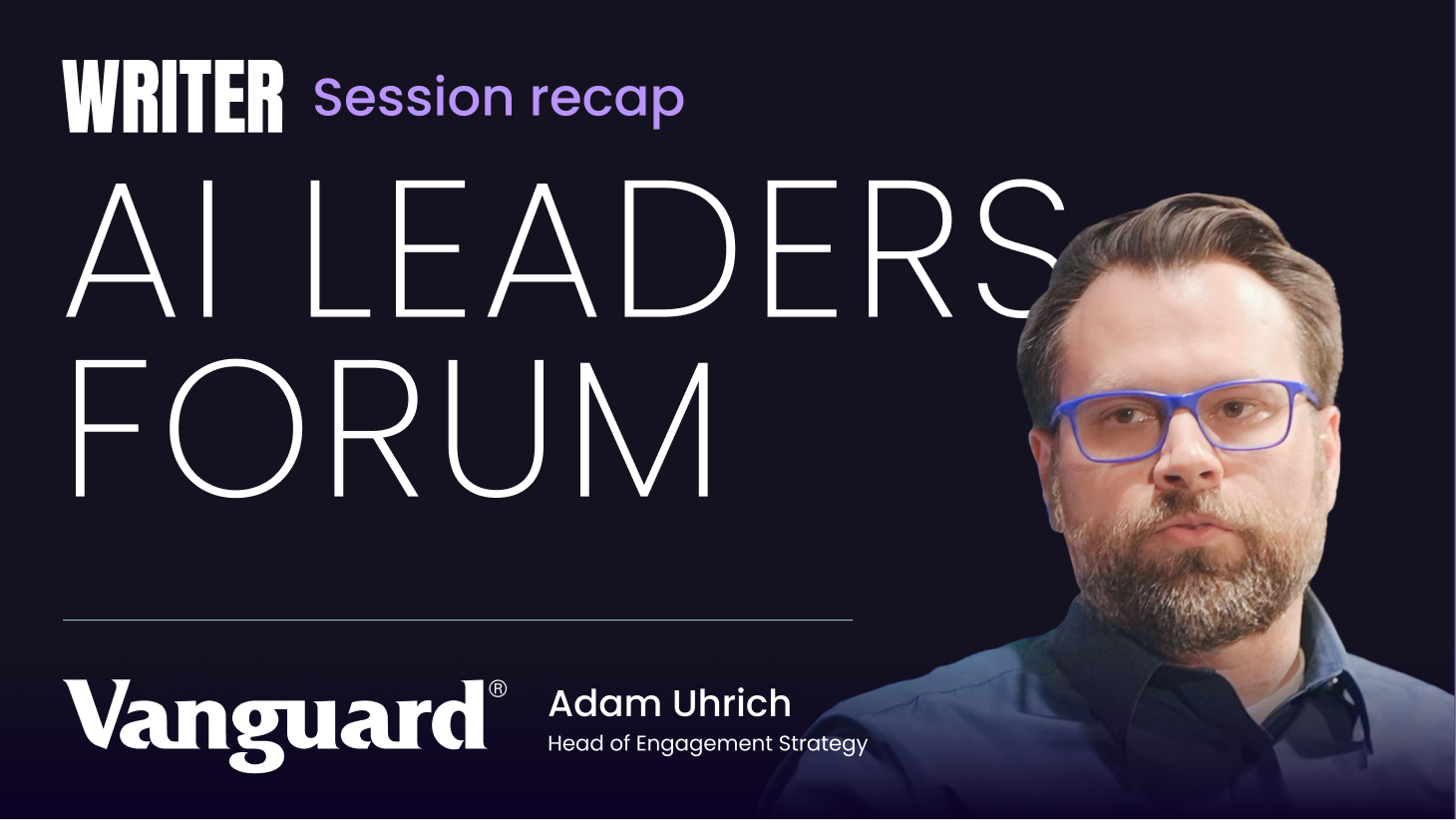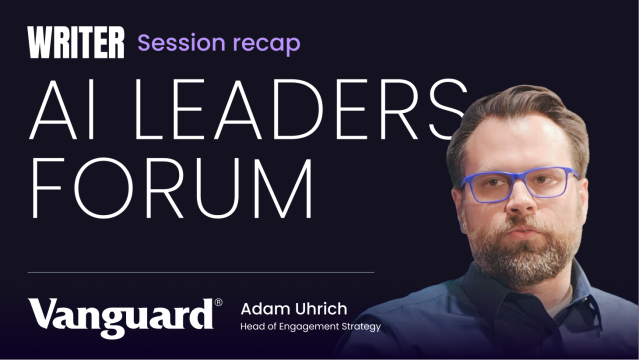AI agents at work
– 8 min read
Traditional investment research is yesterday’s news — the future is AI

When I was working as a portfolio manager at top investment firms, I’d come in each morning to hundreds of research reports waiting for me. Despite having a team of brilliant analysts, we were constantly behind — not because we weren’t smart enough, but because the sheer volume of information was impossible for humans to process effectively. What if we miss critical insights buried in pages of research, or by the time we’d synthesized everything, market conditions had already shifted?
The financial industry produces no shortage of investment research. Research firms generate hundreds of reports per day, and analysts and financial advisors are easily buried in this avalanche of information. Somehow, they’re expected to sift through it all to find critical insights — while managing their other responsibilities.
Here’s the thing — you can’t just throw more people at this problem. I’ve seen firms try to hire their way out of information overload, and it doesn’t work. The volume of investment research will always increase faster than any team can handle. The answer is agentic AI, with purpose-built systems designed for expert, accurate analysis.
- The financial services industry is overwhelmed with the volume of investment research, making it difficult for analysts and advisors to efficiently extract critical insights.
- Agentic AI offers a solution by processing and synthesizing vast amounts of data from multiple sources.
- Enterprise-grade AI, unlike consumer-grade AI, ensures minimal errors and maintains consistent performance, adhering to legal, regulatory, and organizational standards.
- Financial services firms that adopt generative AI are poised to outperform competitors by delivering faster, more accurate, and strategic financial advice.
The AI advantage in investment research
When I first encountered generative AI during my career in financial services, I had one of those moments where everything clicked. This technology could help me find market-driving insights and separate signal from noise in ways I’d never imagined. What I realized is that AI isn’t limited by volume the way humans are.
At WRITER, I work with analysts and financial advisors who rely on data from research reports, news articles, company 10-K filings, and alternative sources — satellite imagery, hiring trends, social media sentiment, supply chain shipping data. These sources provide so much more nuance and depth than numbers alone, but processing them manually? That’s where teams get stuck.
Here’s what I’m seeing with our clients: AI can analyze and synthesize investment research from multiple sources in real-time. When I worked with a team of analysts, there was always a lag between receiving data and taking action. Now, with the right prompting layer — AI that learns from how you do work — you can review the materials you need for insights and get there fast.
The comprehensiveness is what gets me excited. AI eliminates the oversights that happen when analysts miss critical information, and it removes human bias. I actually tell portfolio managers they can treat AI as a coach. Ask it: “Based on my trading activity over the past few quarters, what biases are you seeing in my decisions?” The way we trade is never completely unbiased, and AI helps with risk reduction in ways we couldn’t achieve before.
What’s crucial to understand is this: after AI processes the data and pulls insights together, a human still makes the final decision based on their knowledge and experience. We’re not replacing judgment — we’re augmenting it.
The difference between enterprise and consumer AI
When I talk to financial services leaders about generative AI, they often ask about using consumer-grade solutions. I get it — they’re impressive in demos. But here’s what I tell them: when clients rely on you for expertise and accuracy, you can’t afford the hallucinations that come with consumer-grade AI.
When you have AI powering 401k call centers or customized portfolio reporting, the margin of error — the hallucination rate — needs to be de minimis. You can’t afford mistakes when people’s retirement is on the line.
There’s another issue most people don’t realize. Consumer-grade models change. You might test ChatGPT, validate its performance, and think you’re good to go. But then, over time, you see a drop-off: more hallucinations, more mistakes, failure to follow prompting. This happens because consumer AI companies continuously update their models — sometimes to reduce costs, sometimes to improve other capabilities — without necessarily maintaining consistent performance on your specific use cases. You have no control over these changes, and often no advance notice.
At WRITER, the models we use for benchmarking are identical to what our customers use in production. No surprises, no performance degradation.
You’re also responsible for safeguarding client data and proprietary information. Enterprise-grade AI needs to adhere to legal, regulatory, and organizational standards. You need a partner that provides industry-specific language models producing the right terminology, analysis, and expertise. Your clients expect expert-level guidance—you need to trust that your AI solution can deliver.
The competitive imperative for financial services firms
I left a successful 15-year career in finance to bet on AI. That might sound extreme, but when you see technology that can fundamentally change how we work, you have to lean in. This is our electricity moment — when a disruptive technology emerges and nobody has written the playbook yet.
As a former investment analyst and portfolio manager, I would much rather have spent my time thinking about markets, risks, and scenarios than pulling data and completing manual steps. I wanted junior analysts focusing on big thinking and learning from senior leaders, because that’s what ultimately helps them manage portfolios better and generate more alpha.
According to Accenture’s North American Wealth Management Advisor Survey, only 41% of firms are scaling generative AI as a core part of their business. This represents a massive opportunity gap.
This is a pivotal moment, like the invention of electricity or the steam engine. It’s a disruptive technology, and we’re living it. And no one has written a playbook.
The modern market won’t wait. There will be a clear distinction between firms that use generative AI to deliver faster, more accurate results and those that don’t. The divide will be significant because of the speed differential between AI-augmented analysis and traditional human-only processes.
This isn’t a “wait and see” technology. The transformation is happening now, and financial services firms that have implemented generative AI are already seeing real results. Take Vanguard, for example. They’ve implemented AI-powered solutions that have dramatically improved their client service efficiency and research capabilities, bringing insights to market 57% faster through agentic workflow transformation. A recent Forrester study found that companies using WRITER’’s AI platform for businesses made a 333% return on investment. Labor efficiency improved by 200%, and time to market went up significantly.

Activating AI at Vanguard: powering people, elevating experiences
Check out the customer story
How WRITER transforms outdated research workflows
When we work with financial services firms, we often have to connect the dots to show them what’s possible. Without a playbook for AI in investment research, companies can’t always see the end result. We meet clients where they are — whether they’re early adopters ready to experiment or careful implementers wanting proven solutions.
Take one example: a financial services organization had multiple research dashboards but struggled to synthesize insights quickly. We built an AI-powered portfolio analyst on top of those existing dashboards. Now their portfolio managers don’t just get raw data — they receive comprehensive analysis and actionable insights before markets open.
This kind of transformation goes far beyond simple chat interfaces. WRITER’s Palmyra Fin language model, purpose-built for financial services, enables financial firms to:
- Conduct financial research, investment fund research, and market research
- Analyze and summarize broker research, with tailored insights
- Use a chatbot to conduct a Q&A about broker research
- Conduct research based on company financials or 10-K filings
- Summarize earnings calls with highlights and sentiment analysis
- Research competitive funds
- Conduct research using the SEC Edgar database
Go ahead and try one of our simple assistive agents for yourself: this one analyzes, summarizes, and surfaces insights about broker research in seconds — no prompting necessary.
Beyond research and analysis, generative AI enables financial advisors to personalize client outreach. A tailored strategy can reference recent research alongside past client conversations, creating communications that feel both informed and personal.
You can see these capabilities in action through our AI agent library. These aren’t distant concepts — they’re real-world applications that companies can implement immediately.
Adopt an AI-forward approach
From Uzbekistan to Harvard to Wall Street — every major opportunity in my life required leaving my comfort zone. At sixteen, I left everything familiar because I knew the biggest rewards come from the biggest risks. That mindset is exactly what financial services needs today.
We’re at one of those moments where you can either watch transformation happen or help build it. Many business processes in financial services took decades to form. Now we get to reimagine these workflows in completely new ways. It’s an opportunity to change our approach to traditional investment research and client service.
Every few months, we see step-function changes in AI capabilities. Adopting evolving technology requires collaboration, experimentation, and partnership. But the firms that get this right will deliver more informed, accurate, and strategic financial advice to their clients.
Your success with AI will drive success for your clients. And in financial services, that’s how it should be.



